
Responsive
Image Fader
Our popular image and content fader module has been updated to work with responsive layouts. Resize the screen to see it work.
More Information...




LABORATÓRY OF BIOMATERIAL TESTING
Responsible person: doc. RNDr. Marianna Trebuňová, PhD.
location: Letná 9, main bulding, ground foor B-block, room B-P009
Focus of the laboratory
The laboratory is focused on diagnostic operations, analysis of solutions, observation of preparations and the basics of microscopy using light microscopes. Students can thus deepen and verify the acquired theoretical knowledge from subjects such as Basics of Anatomy and Physiology or Biophysics.
The equipment of the laboratory was supported by the project KEGA 023TUKE-4/2020 "Increasing the synergy of biophysics teaching methods with the use of laboratory equipment and diagnostic devices aimed at measuring physical and technical quantities"

Ciele laboratória
To gain practical knowledge about the possibilities and application of modern technologies in the field of Biomedical Engineering
to acquaint students with the methods used in clinical practice
to deepen students' theoretical knowledge and technical skills in solving assigned tasks
Laboratory equipments
Microscope for observing histological preparations, blood smears and other preparations visible in the light field, Siedentopf binocular rotating head, adjustable eye distance 55 - 75 mm, dioptric refocusing of the left eyepiece ± 5 diopters, coaxial coarse and fine focusing system with stiffness adjustment, 1 part = 2 μm.
Electro-cardiographic device for monitoring heart activity in medical practice,
simultaneous digital recording of 12 leads, AC filter, isoline filter and EMG filter,
measured parameters as HR, P-R interval, P wave, QRS complex, T wave, Q-T interval, Q-Tc interval, RV5, SV1, RV5+SV1, others.
Professional blood pressure monitor intended for ambulatory and hospital environments,
detection of irregular pulses (arrhythmia) and body movement during measurement,
system of intelligent inflation of the cuff to increase the accuracy of the measurement.
Wrist blood pressure monitor for quick and accurate measurement,
detection of irregular pulses,
indicator of high blood pressure.
Multifunctional device with the possibility of continuous mixing for 7 days, usable in microbiological, chemical, immunological, biochemical and molecular laboratories.
Measuring device intended for determining the relative moisture content, dry matter content and other parameters in samples of substances.
A device enabling accurate measurement of pH, conductivity, ion concentration, ORP and oxygen solubility for laboratory applications.
Device with natural circulation and microprocessor PID regulation, with a wide temperature range.
A device intended for interpreting audiograms, calculating the degree of hearing damage, determining the hearing threshold,
frequency range from 125 to 8000 Hz (±2%),
output signal level in the interval -10 to 100 HLdB.
A complex measuring unit intended for the collection and evaluation of data obtained from experiments from Vernier,
5 sensor channels (3 analog, 2 digital),
built-in instructions for experiments,
the possibility of connection with various operating systems (Windows, MAC OSX), mobile devices (tablets, smartphones),
built-in WiFi connection with the possibility of creating your own WiFi network.
A sensor sensitive to alpha, beta, gamma and X-ray radiation,
shielding measurement, nuclear decay rate measurement, radon measurement, and quantitative nuclear statistics generation in sample tasks using LabQuest 2 equipment.
Measurement of absorbance, percentage transmittance and fluorescence of solutions placed in cuvettes within sample tasks using the LabQuest 2 device supplemented with an optical cable for measuring emission spectra.
A set of mirrors, analyzers and polarizers complete with a light sensor and an optical bench suitable for experiments with lighting, polarizing filters, reflection and sunlight in sample tasks using LabQuest 2.
Software
Vernier Logger Pro - Softvér for data collection from LabQuest 2
Taught subjects
LABORATORY OF 3D SCANNING SYSTEMS AND INFRARED DIAGNOSTIC
Responsible person: Ing. Viktória Rajťúková, PhD.
Location: Letná 9, main building, ground floor B-block, room B-P015
Focus of the laboratory
The laboratory is intended for non-destructive, non-invasive and non-contact thermal imaging diagnostics applied for the purposes of research and development, especially in the field of medicine and diagnostics in other areas, as well as for teaching purposes. The laboratory also has static and dynamic scanners, a full-body scanner. The laboratory equipment includes the following systems and equipment for ergonomic measurements, equipment for comparative mechanical tests in tension and compression. The laboratory is also used in teaching at the bachelor's degree in prosthetics and orthotics.
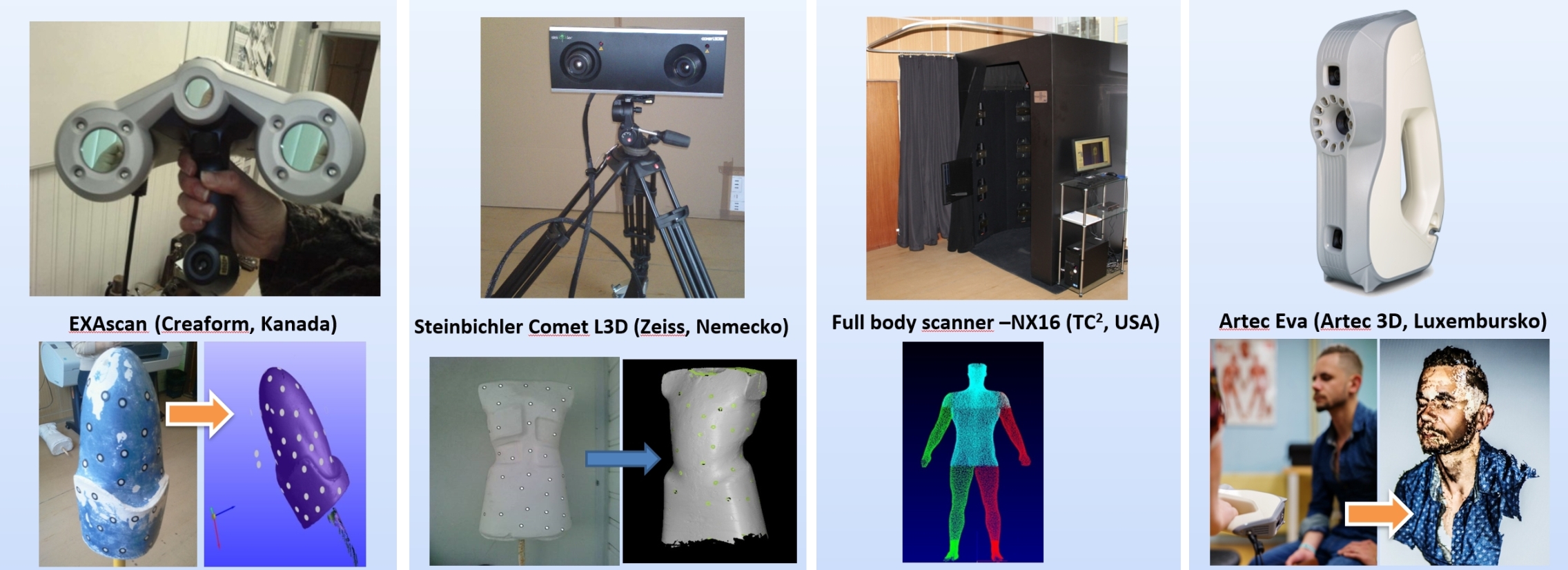
Objectives of the laboratory
Gain knowledge about the possibilities and application of scanning systems in the field of prosthetics, orthotics and calceotics
Familiarize students and teach them to work with the equipment and methods of taking anthrometric parameters using digitizing devices
Mechanical testing of materials produced using additive technologies

Laboratory equipments
Scanning systems
Body scanner TC2 NX16
Creaform Exascan
Steinbichler Comet L3D
Artec Eva
Creality CR-Scan 01
Infrared cameras
FLIR ThermaCAM E 320
ATC 2000 camera
Flir SC660 Thermo Science Set
Infrared camera IR-InSight T200/20
Fluke Thermal imager Ti55 IR fusion
TInfrared camera Tiger 4 plus system
Other devices
Ergo Set for ergonomy measurements
PC Dell Precistion T1700
Sensing system Tactilus Human Interface
Hegewald&Peschke TableBlue 5kN with extensometer CCD-50
Software
Software for recording data obtained during mechanical testing
Ergonomic software for PDAs
Ergonomic software for web applications
SW Quickreport – processing and evaluation of thermal imaging images
Taught subjects
LABORATORY OF ADDITIVE BIOMEDICAL PROCESSES (MAMUT 1)
Responsible persons: prof. Ing. Radovan Hudák, PhD., Dr.h.c. mult. prof. Ing. Živčák Jozef, DrSc., MPH
Location: Letná 9, main building, ground floor B-block, room B-P011
Focus of the laboratory
The laboratory is focused on the application of additive technologies in the field of medicine, including progressive bioadditive production. There are 3D printers in the laboratory, which use platinum materials and powders of metal alloys (cobalt chrome, titanium alloy) to produce models/objects. The laboratory is intended for research purposes in the field of tissue engineering, biomaterials and biomedical engineering.

Objectives of the laboratory

Laboratory equipment
Sofware
CENTER OF ADDITIVE AND REGENERATIVE MANUFACTURING AND ENGINEERING (CARMEN)
Responsible person: prof. Ing. Radovan Hudák, PhD.
Location: Letná 9, main building, ground floor B-block, room B-P008
Focus of the laboratory
The laboratory is primarily intended for 3D-bioprinting of heterogeneous objects and hydrogel constructs based on a digital CAD model, using an additive manufacturing method. We are currently developing our own biomaterials based on polymer cross-linking and testing them in the 3D bioprinting process. Within the laboratory, we have the technology of Fused Deposition Modeling (FDM), Injection pore filling (IPF) and Injection volume filling (IVF).
FDM – the principle of this technology consists in melting the filament in the print head. According to the so-called He applies the G-code to the mat and the object is created layer by layer.
IPF - technology of injection pore filling (IPF) allowing to select specific layers on which cells will be injected into selected pores. This also allows the injection of controlled amounts that may even be different in each individual layer. This technology increases and guarantees the survival and viability of cells in extreme conditions, such as in the case of working with thermoplastic polymers at high temperature.
IVF – it is a technology that uses 3D-bioprinting directly of the hydrogel from the injection cartridge.
The laboratory was created with the support of CEMBAM and OPENMED projects
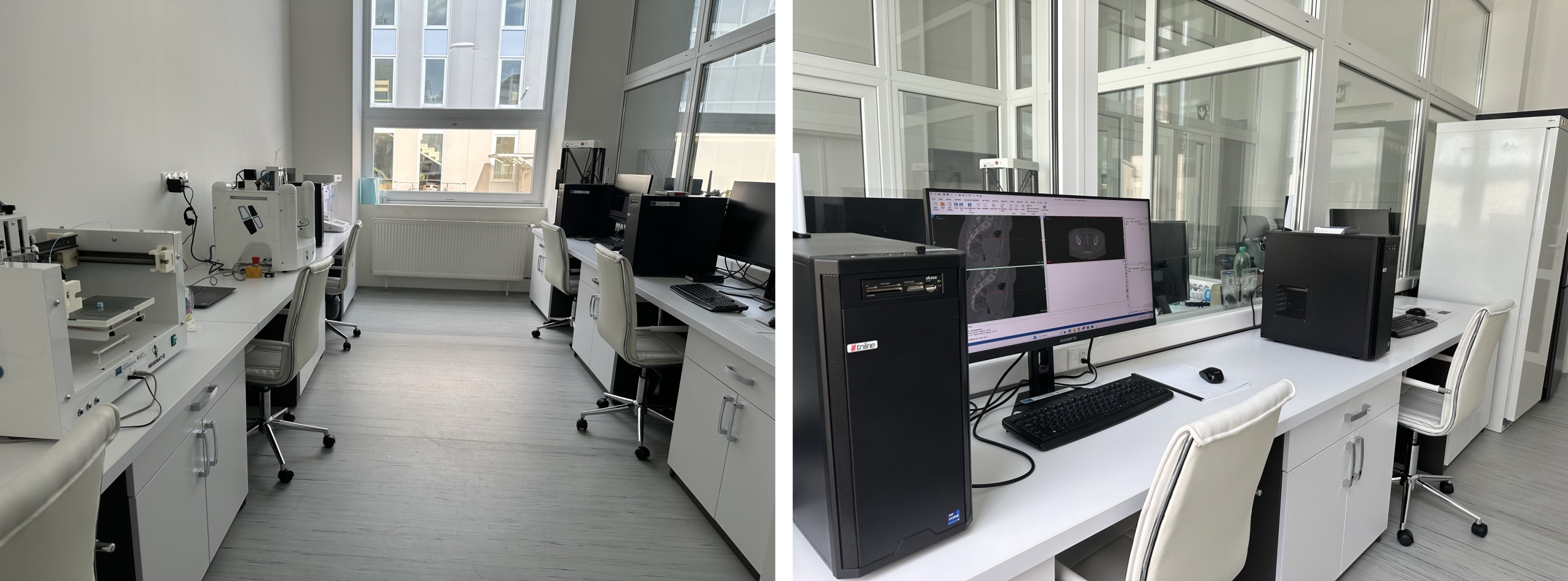
Laboratory equipments
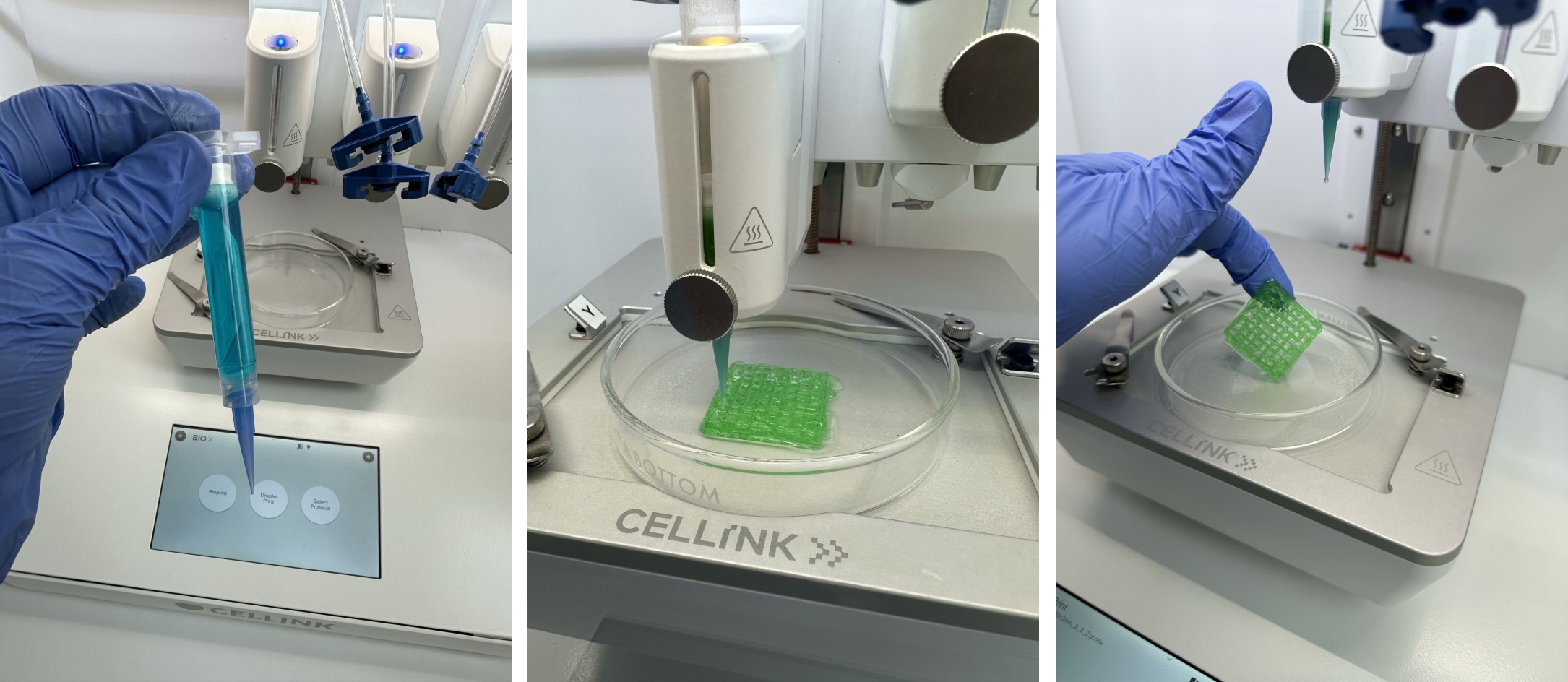
LABORATORY OF COORDINATE METROLOGY
Responsible person: doc. Ing. Teodor Tóth, PhD.
location: Letná 9, main building, ground floor B-block, room. B/P012

Focus of laboratory
Coordinate measuring machines enable touch and non-touch assessment of the accuracy and quality of component production. the Contura G2 CMM is a gantry type for high-speed scanning. It is designed for measuring specific elements, in a number of positions with different angles and for small sensor configurations. The rotating Zeiss RDS measuring head allows measurement in 20736 positions and rotates in 2.5° increments, and with the support of Vast XXT technology it can scan in all positions. Computer-Aided Accuracy (CAA) technology ensures correction of kinematic deviations to achieve extremely accurate results.
Calypso evaluation and service software, based on CAD technology, enables object-oriented creation of CNC measurement programs. Fast and accurate scanning of known geometric shapes (circles, cylinders, cones, planes, ...) is ideal for efficient measurement of parts with a large number of tolerated parameters. Scanning known profiles (contours) of curves and general surfaces, as well as unknown curves, is ideal for digitization in tool and mold manufacturing. The HOLOS and GEAR superstructures are used to measure general surfaces and gears.
With the help of a coordinate measuring machine, it is possible to check the dimensions, shape and positional deviations of the parts.

Objectives of the laboratory
Laboratory equipments
Software used in laboratory
Vyučované predmety
TRIPOLYS
Responsible person: Ing. Viktória Rajťúková, PhD.
Umiestnenie: Letná 9, main building, ground floor B-block, room B/P004
Focus of the laboratory
The laboratory is focused on large-format 3D printing of PA12 polymer for medical applications. The device and the material used have a certificate for temporary invasive applications, e.g. for the creation of surgical guides for the preparation of the introduction of serial implants (endoprostheses) as well as personalized implants. The laboratory also includes equipment for chemical-mechanical removal of support material for plastic and metal additive manufacturing.
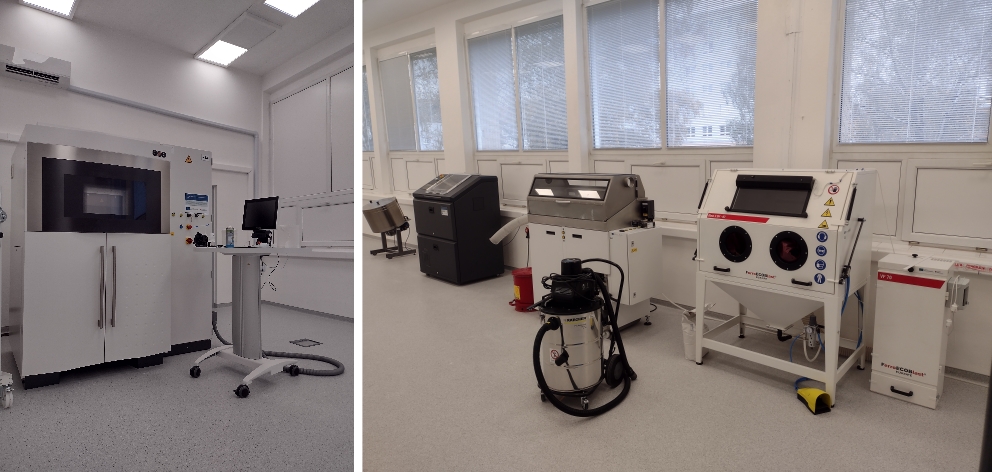
Objectives of the laboratory
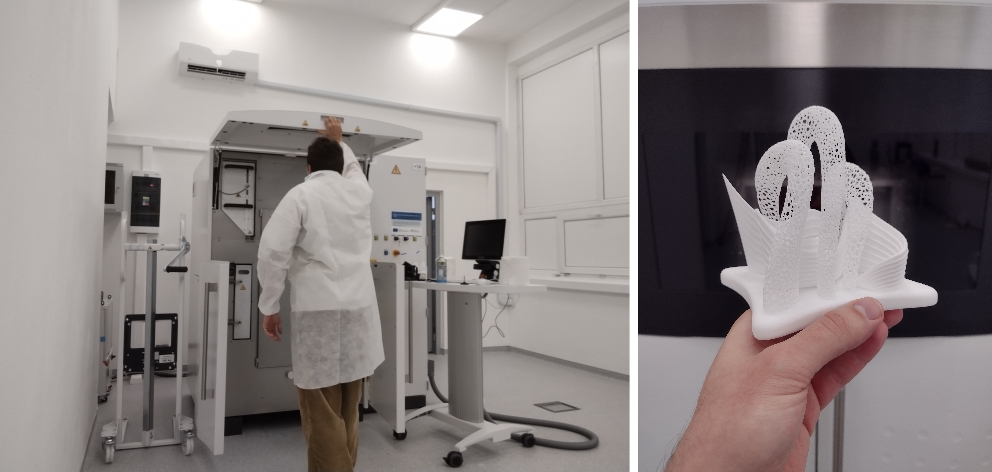
Laboratory devices
Software
Office hours:
Tuesday: 8:00 a.m to 12:00 a.m
Thursday: 8:00 a.m to 12:00 a.m